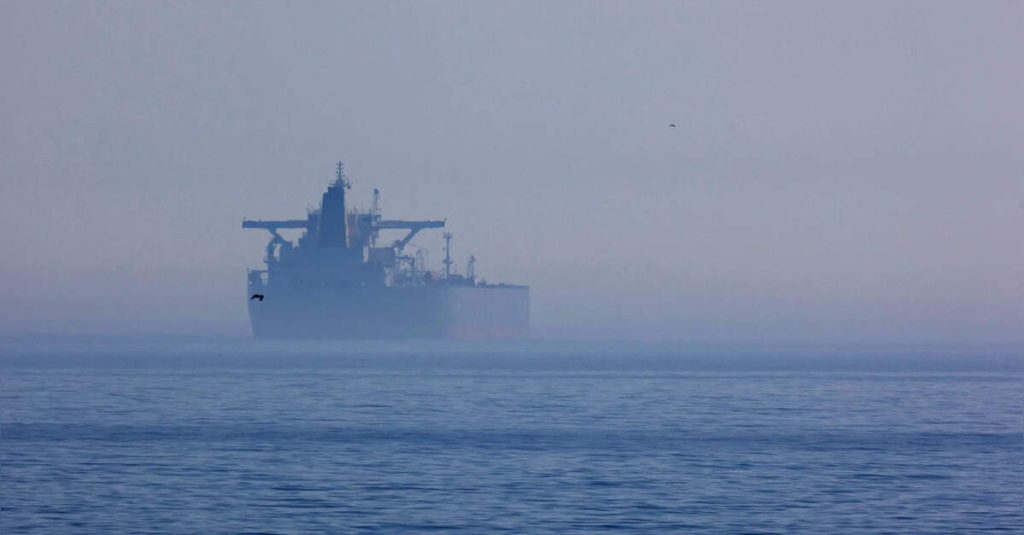
The sale of a US-sanctioned tanker being pulled apart in India includes extended payment terms and measures to shield the identity of the owner, unusual clauses that point to growing pressure on older dark fleet vessels as sanctions enforcement tightens.
Contract II — built almost three decades ago and sanctioned in 2019 under the name Jasmine for its involvement in the Iranian oil trade — beached in late June at Alang, a ship-breaking center in western India that has become a hot spot for dark-fleet vessels. More such ships have turned up at the hub over the past months, as penalties make it harder to keep old tankers in the illicit oil trade.
An eight-page sale document seen by Bloomberg, a rare glimpse at the financial terms around a sanctioned ship’s demolition, includes details of a 180-day period for payment, far longer than what people familiar with the ship-scrapping business described as the industry standard of a few days or weeks. The buyer, listed as Shantamani Enterprise LLP in the contract dated May 20, can wire-transfer partial payments, interest free, over the period of almost six months.
“No seller would accept to wait for his money so long after delivery,” said Andrew Wilson, head of research at BRS Shipbrokers, who reviewed parts of the contract. “This indicates that the seller needs to get rid of this ship rapidly.”
Bimco, a global shipping organization that creates standard contracts, said a buyer would usually make a deposit and then pay what’s left of the purchase price no later than three banking days after delivery has been decided.
Two calls to Shantamani went unanswered and the company didn’t respond to an email with a list of questions about the purchase.
The US and European Union have repeatedly added more ships to their sanction lists for supporting Russian, Iranian and Venezuelan oil exports. A year ago, there were 191 sanctioned tankers, while the tally is now at 886, or 78% of the dark fleet, according to BRS. Older sanctioned tankers, with no chance of taking on mainstream trades, now either have to compete with younger ships in the blacklisted flotilla, or else head for the breakers.
Selling at a Discount
The document lists Thousand Miles Shipmanagement Corp. as the seller of the vessel — a company with a registered address in the Seychelles that’s linked to other US-sanctioned entities, but has no online presence or contact details.
Brokers that deal with ship scrapping will sometimes set up a special-purpose vehicle to handle the final delivery of vessels sent for demolition, but the use of shell companies to shield owners is also common with dark-fleet tankers. Industry participants questioned by Bloomberg did not have any knowledge of Thousand Miles.
Bank account details are almost always listed in the document too, according to industry sources. However, that information is absent from the Contract II document, which lists the payment price at 14.04 million United Arab Emirates dirhams ($3.82 million).
UAE dirhams are not commonly used as currency for such deals, far more frequently settled in US dollars, they added. They asked not to be named as the matter is sensitive
The payment terms and use of a shell company are measures intended to make it harder for the transaction to be traced back, while sweetening the deal enough for would-be buyers to take the risk, according to Charlie Brown, a senior adviser at United Against Nuclear Iran. It fits a trend in the trade of blacklisted ships, said Brown, who focuses on maritime sanctions enforcement at the advocacy group.
As with most such deals, the tanker was sold at a discount relative to the market, based on the rate for scrap steel in India at the time the document was drafted. That could make sense for both seller and buyer, with Thousand Miles likely keen to get rid of blacklisted tonnage, and the scrapyard seeking to keep margins healthy and stay ahead of the competition at a time when the sector is battling a downturn.
The process of pulling apart Contract II started this week, according to the people familiar with the industry. Demolition typically begins around a month after a ship has beached to allow for fuel removal and official authorization for scrapping.


